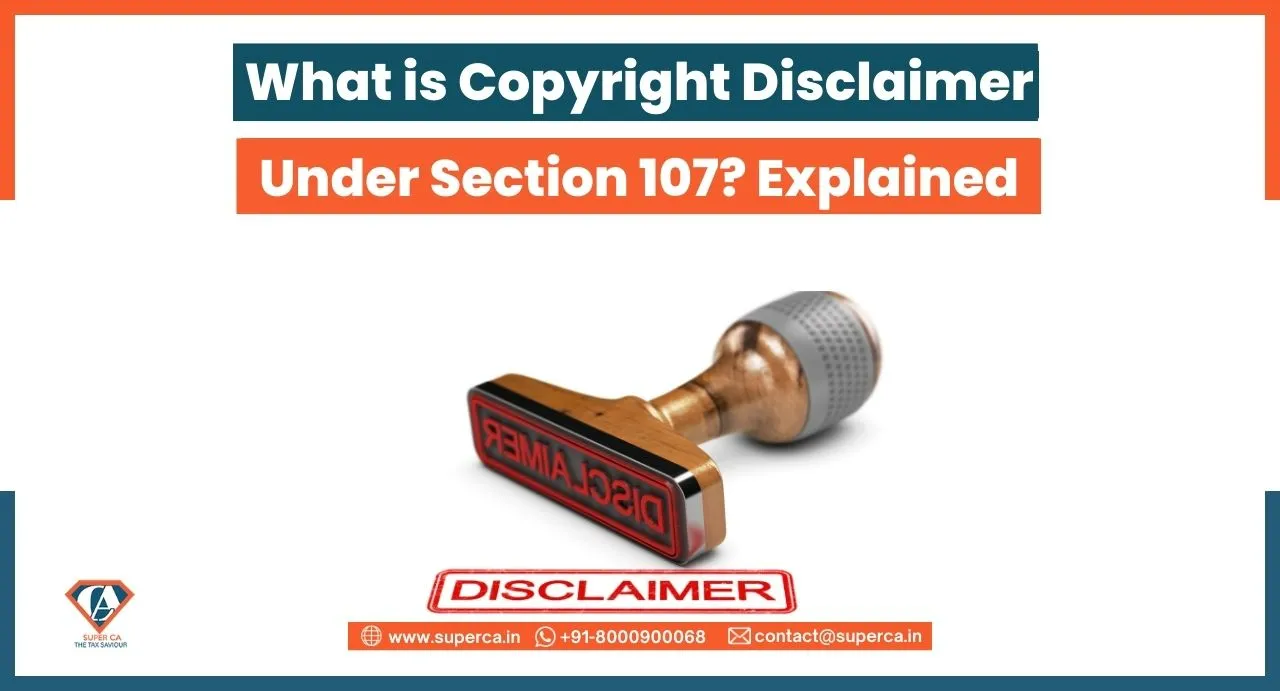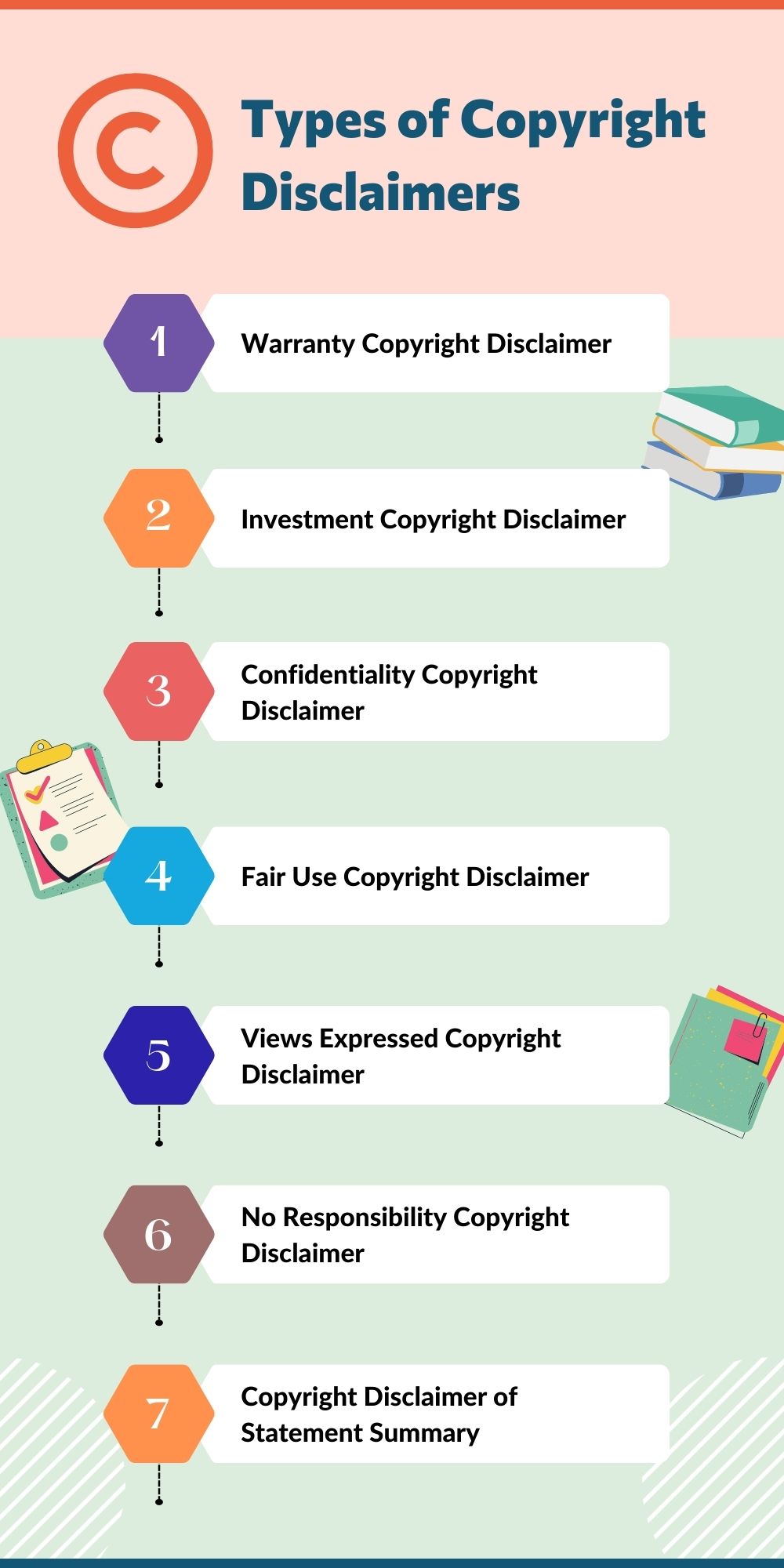What is Copyright Disclaimer Under Section 107? Explained


Section 107 of the Copyright Act (also known as the Fair Use Act) covers fair use of copyrighted works. According to this section, a Copyright Disclaimer states that interest is generated for “fair use” of ideas such as review, comment, news reporting, teaching, scholarship, learning, and research. A copyright disclaimer is used when the subject matter on the website or application is solely managed and copyrighted by the author/writer.
A copyright disclaimer can be added to videos or other forms of media that feature the fair use of copyrighted work to help protect you against copyright infringement claims. Fair use permits the commentary, criticism, or parody of a copyrighted work without having a license from the copyright holder. The factors that help determine what constitutes fair use are- the purpose and character of the use (including whether such use is of a commercial nature or is for not-for-profit educational purposes), the nature of the copyrighted work, the amount and sustainability of the portion used in relation to the copyrighted work as a whole, the effect of the use upon the potential market for or value of the copyrighted work.
A copyright is a collection of rights that is provided to someone who creates an original work of authorship like a literary work, song, movie, or software. Once you create original work and fix it, like taking a photograph, writing a poem/blog, or recording a new song, you are its sole owner. The copyrights provide you the right to reproduce the work, prepare derivative works, distribute copies, and perform and display the work publicly. Copyright also provides the owner of copyright the right to authorize others to exercise these exclusive rights, subject to certain statutory limitations.
This disclaimer appears on content that uses someone else’s copyrighted content. Including the statement of “fair use” helps protect against copyright infringement claims.
This disclaimer can be used on blogs, websites, images, videos, music, and even social media to establish your ownership over original content. Having this statement helps protect your work against theft.

The key advantages of Copyright Disclaimer include-
Copyright Disclaimer protects the legal right and develops the legal assurance of your work by implying that the work is registered under the Copyright Act, 1976, and will give proof of your ownership and release you of any legal hassle when other parties violate the act.
Copyright Disclaimer helps in preventing others from making unwarranted use of the author’s work. If you come upon that someone is copying the author’s work, he/she can send a `cease’ notice. So, a person does not have to bother about legal proceedings at a later stage. This saves a lot of time and money.
Perhaps one of the biggest benefits of copyright law is that it fosters an atmosphere of creativity and innovation.
This is one of the most vital advantages of Copyright Disclaimer; even though a Copyright owner has rights in work, those rights with restricted grants cannot be forced via the courts unless the work is registered in India. Without Copyright registration, a copyright owner cannot make a lawsuit for copyright contravention.
Your work will be published in the Copyright Office’s Catalog and will be searchable to the public. Anybody thinking of using this work will be able to search this Catalog and see that your work is protected. This gives constructive notice to the public that you own the work and helps in eliminating “innocent infringement.”
Another benefit of Copyright Disclaimer is that it gives the copyright holder the reputation that certain work belongs to him. This serves as an asset to the work & safeguards the particular way an author or creator.
The first thing is Visibility. Copyright Disclaimer should be clearly visible and not hidden from view. You should always place a notice to this effect on all visually obvious copies for instance, books, photographs, sheet music, and films. The appropriate copyright symbol ‘©’ has to be incorporated to make it clear that the work is covered under the Copyright Act. Further, the year of the publication has to be mentioned with the name of the copyright holder must be mentioned.
The copyright notice should also be attached or placed in a segment of your work. If you wish to secure the copyright in your company’s name, make sure that your business is legally registered and functions according to the rules and regulations. Further, the rights statement should be attached to show what rights a copyright owner is holding.
Disclaimers are an important protection measure for anyone operating online. There are multiple benefits of copyright registration. It encourages creativity and innovation and helps a country grow both in economic as well as cultural terms.
Fair use is a use permitted by the Copyright Disclaimer under section 107 of the Copyright Act that might otherwise be infringing. By including a fair use copyright disclaimer, a person states that he doesn't own the copyright, but that he's using the copyrighted materials under the ‘fair use’ clause. This clause allows small instances of use for certain purposes, such as the creation of educational materials or the use of quotes or snippets in other work.
Unregistered copyright has a lot of disadvantages-
• Unregistered copyright holders are less likely to reproduce their original material.
• In the case of unregistered copyright, proof of ownership of the original work becomes difficult.
• Protection against copying or reproduction becomes difficult for unregistered copyright.
• A lawsuit for violation cannot be filed unless your copyright is registered.
• The owner of non-registered copyright cannot prevent anyone from infringing its rights unless they register their work.
Copyright work includes books, music, paintings, sculpture, films, computer programs, databases, advertisements, maps, and technical drawings.
Works that are, not written, recorded, or captured electronically, and Titles, names, short phrases, and slogans; lettering or coloring; mere listings of ingredients or contents are not covered under copyright protection.
A disclaimer addresses particular liability issues, while the terms and conditions describe the site's rules of use and set out property rights.
As a general rule, for works created after January 1, 1978, copyright protection lasts for the life of the author plus an additional 70 years. The duration of copyright also depends on the date it was published
Suggested Read:

|
Essential LLP Registration Documents: A Complete Checklist for Entrepreneurs Author: Rahul Singh 04 Apr, 2024
|
Get inspired by these stories.